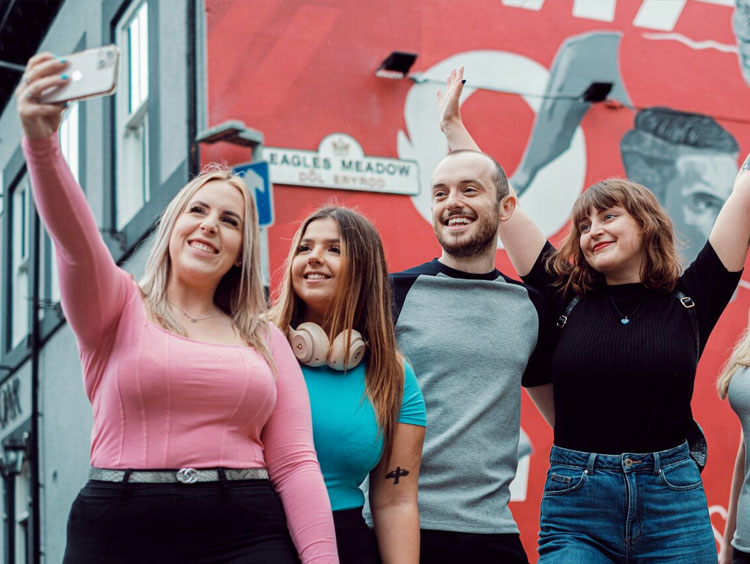.jpg)
Pathways to Impact
Methods of knowledge exchange and dissemination are pathways to impact.
To get started, ensure you are ‘discoverable’ as an expert in your field. This is a solid foundation from which to disseminate your work – remember, knowledge exchange is a pre-cursor to impact.
Second, make sure that your work is out there and accessible.
Having pathways of impact in place and knowing what is a pathway can also help with the ‘impact’ section of grant applications.
Well-known pathways to impact
- Publications
- Publication/book reads or downloads
- Delivering a talk at a conference or workshop
- Talking to people about your research
- Engaging stakeholders with your research
- A robust impact plan
Now you’ve got a discoverable web presence for people to find you, if they happen to be looking, it’s time to turn your attention to actively trying to reach people, rather than hoping they might just stumble upon your work. The key is to follow these 5 principles and plan plan plan!
Content Accordions
-
Email Signature
Your email signature might be the first impression that someone gets of you, so it’s good to get it right.
- Include active social media links that are relevant to your work. Leave out your Instagram page dedicated to your cat, Jeffrey. If you’re not active on social media, consider adding in a link to one of the relevant university social media accounts, e.g. Research, Nursing, or Engineering.
- Consider adding a professional photo. Outlook allows you to add a profile photo to your account; it’s always good to see who you’re emailing.
- Include your call to action (or several). Just published a book and want people to read it? Add a link. Uploaded some slides about methodology or conference proceedings? Add a link. Created a website for your new project? Add a link!
- Include active social media links that are relevant to your work. Leave out your Instagram page dedicated to your cat, Jeffrey. If you’re not active on social media, consider adding in a link to one of the relevant university social media accounts, e.g. Research, Nursing, or Engineering.
-
University Website Profile
Ensure your profile is up to date on the external-facing Wrexham University website. Staff and PGRs can login to the Wrexham Research Information System and complete all relevant sections.
-
Google Scholar
Many people now use Google Scholar for literature searching, and there’s a really easy way of adding an academic profile. If you haven’t already got one, create a Scholar profile.
- Go to Google Scholar and click on ‘my profile’.
- Fill in your details & verify your academic email address.
- Confirm your articles and add any that Google has not found automatically.
- Add a profile photo so people know it’s really you!
- Go to Google Scholar and click on ‘my profile’.
-
Research Gate
Similarly, if you haven’t already, create a Research Gate page.
As well as adding published works, you can also add planned and ongoing work.
On Research Gate, you can connect with people in your department or team, and interested academics can reach out to you or request full copies of your papers.
-
Personal Website
If you have the time and capacity to create a personal website, then go for it!
You can basically turn your CV into an accessible page to sell your professional self.
Add your publications, workplaces, experiences, research interests, and current projects.
Include calls for action, such as sharing work, projects, or recruiting participants.
-
Social Media
If you haven’t already jumped into the world of social media, why not start today?
X (Twitter) is excellent for short snappy soundbites and it’s easy to connect with any academic in the world if they have a Twitter handle (@personsname).
Use hashtags to reach certain audiences, e.g., #AcademicChatter, #PhDChat, and retweet interesting things relating to your field. Striking photos usually attract more attention, as do short engaging videos.
If your subject is more visual, like art or theatre, Instagram might be where it’s at! This is an image sharing platform that also uses hashtags, e.g. #CatsOfInstagram, and you can follow other people with similar interests.
-
Slideshare
If you’ve presented at a conference and would like to easily share your slides, consider uploading them to Slideshare and then emailing or sharing via social media. This will also make them discoverable for anyone who searches your topic on Slideshare.
Accessibility and Inclusivity
Try to remember to capitalise the first letter of each word in a hashtag so that screen readers can pick up the words more easily for those who are #VisionImpaired. Also, try to add ‘alt text’ to any images so screen readers read out a description of the image.
Avoid posts entirely made up of emojis, as this is a nuisance for those who have to listen to them: “face with rolling eyes, face with rolling eyes, face with rolling eyes, unamused face, neutral face, clapping hands, clapping hands” etc.
If you post a video with narration, ensure you have subtitles or captions so that those who have hearing loss are able to access your content.
Use gender-neutral language. Unless your work is specifically related to one gender, do not use language that is biased towards one gender, e.g. mankind or guys can easily be humankind/humanity and everyone/folks.
If you’re including stock photos in your post, avoid repeating stereotypes; for example, a leader is always represented by a white male, and a nurse is always represented by a woman. Include a range of people in your images. Representation is key: “you can’t be what you can’t see”.
Be mindful of the language you use. You might think it is harmless to say something is ‘insane’ or that your organisation skills are ‘a bit OCD’, but consider how these sound to someone struggling with their mental health. Create respectful posts.



